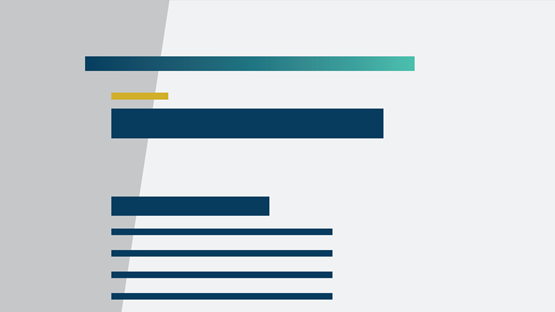Economies around the world—large and small, developed and developing—are grappling with inflation rates not seen in decades (see figure). As Fed officials have said many times, central banks generally have one way to fight the rising price level: Tamp down aggregate demand, using various tools that prod short- and long-term interest rates to rise across the economy.
Raising interest rates, however, can have many and varied effects. In a recent Minneapolis Fed working paper, visiting research economist Louphou Coulibaly and Julien Bengui of the Bank of Canada take up a timely question: Are there times when raising interest rates might actually undermine a central bank’s battle against inflation? If so, what might we do about it?
The authors model two national economies facing an increase in inflation driven by supply-side “markup shocks.” These shocks could include higher commodity prices, labor shortages, or shipping disruptions. The response of central banks in the model is the standard prescription: Raise policy rates to cool demand, slow economic growth, and bring inflation under control.
In a “closed” economy without international trade or investment, that might be the end of the story. But in the model considered by the authors, as in reality, money from investors flows freely across national borders. This international capital flows toward those higher interest rates. Under certain conditions, this might amplify the dynamics of “stagflation”: The central bank in the model unknowingly over-tightens, causing a deeper economic contraction while further increasing inflation pressures.
“The idea that free capital mobility can undermine the ability of monetary policy to fight inflation is not well understood,” said Coulibaly, also an assistant professor of economics at the University of Wisconsin–Madison. “Policymakers should be concerned about the direction of capital flows when they start raising interest rates, because this can undermine the ability to fight inflation in the first place.”
How raising interest rates could lead to higher prices
The typical understanding of monetary tightening holds that an increase in interest rates lowers inflation through a variety of channels. Higher rates reduce borrowing and increase saving, reducing consumption and aggregate demand. In economies open to trade, higher interest rates appreciate the value of the exchange rate, which reduces exports—further lowering domestic production and employment—and lowers import prices, contributing to lower inflation.
In “Stagflation and Topsy-Turvy Capital Flows,” Coulibaly and Bengui posit an “externality” that operates at cross-purposes—a secondary mechanism pushing prices up, which policymakers don’t take into account when raising interest rates:

- Capital inflows from abroad, attracted by the higher return offered by rising rates, strengthen the exchange rate of the local currency, which makes foreign goods cheaper and thus bolsters household consumption.
- This “wealth effect” (a boost in buying power) makes households marginally less inclined to work (raises their “reservation wages”), which puts upward pressure on wages. This tighter labor market increases businesses’ marginal costs, which they pass along as price increases to consumers.
- The increase in household wealth also leads to an increase in household demand for non-tradable goods and services, which puts upward pressure on those prices.
- Facing this continued pressure on prices, the central bank raises rates further, triggering (or deepening) a recession while attracting still more foreign capital.
This loop resembles the concept of a “wage-price spiral,” in which higher wages prompt higher prices and vice versa. In this case, the spiral is sparked through a secondary channel that economists have not much considered: Higher interest rates attract more capital from abroad, leading to upward pressure on prices.
Turning “topsy-turvy”
In an economic slump caused by sagging demand, more foreign investment—by boosting domestic spending—can be just what the doctor ordered. But for an economy experiencing a slowdown driven by supply shocks, Coulibaly says it is optimal for capital to flow out of the country, relieving pressure on demand, labor costs, and prices.
Under certain conditions, however, the economists find the chain of events above could slow this capital outflow or even cause the net flow of capital to run inward, in the wrong direction (the “topsy-turvy capital flows” from their paper’s title). These conditions include the “trade elasticity” (the degree of substitutability between imports and exports) as well as the amount of “home bias” in domestic spending (consumers’ preferences for domestically produced goods versus foreign goods).
Economists regularly calculate these figures from real-world economic data; Coulibaly and Bengui calibrate their two-country model with accepted values from the literature and believe their externality would arise under “most plausible model calibrations.”
The findings depend partly on a household “wealth effect” that is an unsettled issue among economists: To what extent do lower import prices actually translate into decisions by workers to supply less labor? And while falling import prices might have an inflationary effect via consumers and workers—ultimately raising labor costs to firms—cheaper imports also lower the prices those firms pay for foreign inputs. The balance of these effects would determine whether firms’ marginal costs increase or decrease overall.
Implications for policy
“Stagflation and Topsy-Turvy Capital Flows” joins a growing body of research exploring how today’s novel mix of demand, supply, and price pressures—generated by the COVID-19 pandemic and war in Ukraine—calls for different models and tools than those built around prior economic episodes.
For monetary policymakers in this topsy-turvy world, the insights suggest a new consideration when setting interest rates. “In the policy debate, people talk about whether we are tightening too much or not tightening enough,” said Coulibaly, “But people aren’t necessarily thinking about the implications of capital flows and how they can lead to more inflation.”
Increased monitoring and modeling of capital flows, mindful of the externality described here, could argue for less aggressive monetary tightening rules. An optimal policy interest rate would tamp down inflation via the demand side without unduly inflaming it through the effects of inflowing capital on a tight labor market.
In their paper, the economists model another policy option that is not generally on the menu for high-income countries: A policy to constrict the pipeline of incoming investment. In their two-country model, the economists introduce a tax on international financial transactions, calibrated to minimize the effect of the externality on the country with the more severe stagflation challenge. In that country, this “optimal capital flow management” yields a slightly faster drop in inflation and a significantly shorter, milder recession.
What’s more, the outcome “is not a zero-sum game,” the economists write. As a general matter, classical economics tends to favor free movement of capital across borders. In the economists’ simulation, however, some level of restriction leads to more moderate inflation and milder recessions in both countries.
This theoretical paper considers two abstract nations. However, some distinctive features of the U.S. economy could inform future iterations of the research. For example, how would these effects play out when a country already has much more investment flowing in than out? The U.S. has had such a capital and financial account surplus (and its mirror image, a corresponding trade deficit) since the 1980s, reaching a record of nearly $1 trillion in 2022.
A closely related fact: In good economic times and—perhaps especially—in bad economic times, global investors purchase U.S. debt and other assets as a safe and liquid way to store wealth. In a stagflation scenario, however, the economists’ model suggests that being a haven for international investors could be a mixed blessing if rising foreign investment places further upward pressure on prices.
In media coverage, the impact of interest rates on inflation is often reduced to a simple cause and effect: Higher rates push down on prices. While this shorthand captures essential economic wisdom, the prospect of “topsy-turvy capital flows” is a reminder that changes to interest rates—like most economic policies—do not play out along a straight or simple path. Outcomes depend upon the balance of forces and economic conditions on the ground. And there is always more to learn.
Jeff Horwich is the senior economics writer for the Minneapolis Fed. He has been an economic journalist with public radio, commissioned examiner for the Consumer Financial Protection Bureau, and director of policy and communications for the Minneapolis Public Housing Authority. He received his master’s degree in applied economics from the University of Minnesota.




